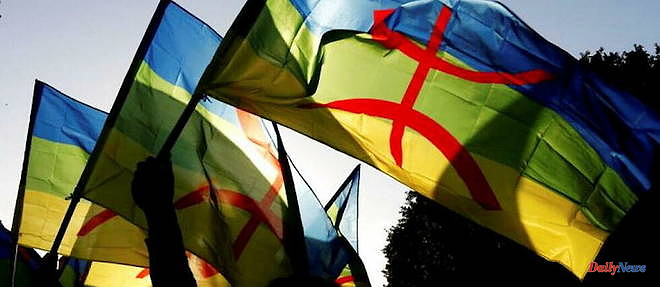It was through an unexpected - and laconic - dispatch from the official Maghreb Arabe Presse agency, released last Wednesday, May 3, that the Royal Palace announced that "His Majesty King Mohammed VI, may God assist him, has decided to establish Amazigh New Year's Day, an official paid national holiday, like the first Moharram of the Hegira year and the Gregorian calendar's New Year's Day". Between the lines, the message is clear: Morocco continues to dig the furrow of plurality by putting the day of the Amazigh year on the same level with the beginnings of the year of the Islamic and Gregorian calendar. As a reminder, the Amazigh New Year (Yennayer) is celebrated every year on January 13.
According to a connoisseur of the mysteries of Moroccan power consulted by Le Point Afrique, "this announcement comes two days after Labor Day in a rather inflationary climate, and a few weeks from Aïd-el-Kébir, the most important religious holiday celebrated in Morocco". A way of indicating that its timing is far from being the result of chance in a Cherifian kingdom plagued by many economic challenges, and not only. "It's as if Mohammed VI – whom Moroccans know to be adept at shadow puppet messages – wanted to emphasize his centrality to the major issues that structure the nation, in order to once again stretch the agenda and get out of the current social pressures and strain on the executive. That said, it should be noted that the issue of recognizing Amazigh is far from new to the Moroccan ruler. It is rather what this connoisseur calls a "reign project" which was started very soon after the accession to the throne of Mohammed VI in July 1999.
It is therefore appropriate to recall the strong measures taken since then, and in particular the official recognition of the Amazigh language as the official language of Morocco in 2001, alongside Arabic. A major turning point in terms of its concrete effects on the ground, since this decision has indeed allowed the teaching of the Amazigh language in schools and universities, as well as its official use, from 2004, in the public audiovisual media, allowing thus the creation of television and radio programs in the Berber language. At the same time, nothing less than the Royal Institute of Amazigh Culture (IRCAM) was created, still in 2001. Its mission: to promote and preserve Amazigh culture through the organization of cultural events, festivals, conferences, exhibitions, publication of books and radio and television broadcasts. What lead King Mohammed VI to strengthen the furrow by declaring in a speech delivered in 2006 on the occasion of the Throne Day that "Amazigh culture is an essential component of [their] centuries-old heritage. It is an integral part of [their] national identity and [their] national unity”. Highlighted at the highest level of the state, Amazigh culture was left with only constitutional recognition. This will be done in 2011 when the fundamental text is reformed just after the "Arab Springs".
A work in perpetual evolution, the Amazigh question was entitled to its territorial declension. Thus, in 2015, King Mohammed VI announced an economic and social development plan providing for investments in infrastructure, health, education, agriculture, tourism and crafts in the regions to strong Amazigh dominance. Last but not least: in 2019, an organic law for the generalization of the Amazigh language was adopted. It has made it possible to define its use in the administration, local authorities and public services, its teaching in schools and its use in cultural life. Therein lies the explanation for the appearance of the Tifinagh alphabet on public buildings, in addition to Arabic and French. With such advances complemented by this latest decision by King Mohammed VI, the "Amazigh" subject reinforces its institutionalization. Something to delight the Berbers and give them real reasons to exult.












